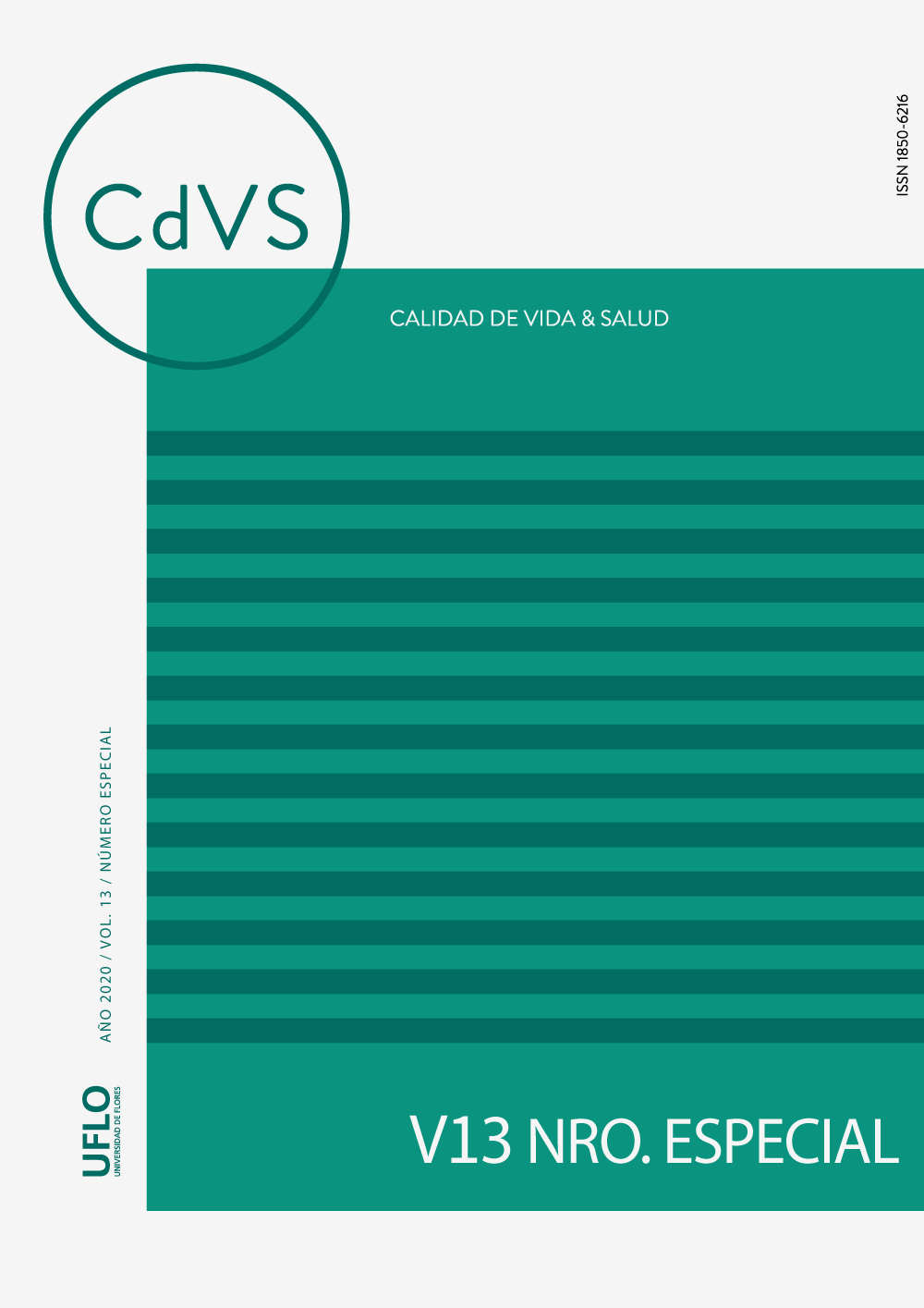Some health characteristics in persons with DM2 middle age with and without companion dogs
Keywords:
alcoholism, companion animals, diabetes, psychotropic drugs, physical activities, tobacco addictionAbstract
A study was made with the objective to describe the consumption of toxic substances (alcoholic beverages, tobacco and psychotropic drugs) and the motivation to perform physical activities, in middle aged patients with diabetes mellitus type 2 (DM2) with and without pet dogs, under medical care at the center for the care of persons suffering from diabetes belonging to the National Institute of Endocrinology in Havana, Cuba. In order to do this, a quantitative methodological design, of descriptive, cross section and comparative character was made, including 48 patients divided into two homogeneous groups composed by 17 women and 7 men each. When variables were evaluated it was found that there was less consumption of toxic substances in patients who had pets under their care and that patients who had dogs performed most of their physical and sports activities motivated by the fact that they were responsible for their pets. It is recommended to continue these studies, enlarge the representative portion and include other groups of patients being taken care of at this institution.
References
Alfonso, K., Achiong, F., Achiong, M., Achiong, F., Fernández, J., & Delgado, L. (2011). Factores asociados al hipertenso no controlado. RevMéd Electrón, 33(3). Disponible en: http://www.revmatanzas.sld.cu/revista%20medica/ano%202011/vol3%202011/tema04.htm
Cangelosi, P., & Sorrell, J. (2010). Aging matters walking for therapy with man’s best friend. Journal of Psychosocial Nursing and Mental Health Services, 48(3), 19-22.
Casanova, M. C., Bayarre, H. D., Navarro, D. A., Sanabria, G., & Trasancos, M. (2015). Educación diabetológica, adherencia terapéutica y proveedores de salud. Rev Cub Salud Pública, 41(4). Disponible en: http://www.revsaludpublica.sld.cu/index.php/spu/article/view/520/385
Díaz Videla, M. (2015). El miembro no humano de la familia: las mascotas a través del ciclo vital familiar. Revista Ciencia Animal, 9, 83-98.
Díaz Videla, M., Olarte, M. A., & Camacho, J. M. (2015). Perfiles BASICCOS del humano compañero del perro: Una revisión teórica en antrozoología guiada por el enfoque multimodal. Revista Argentina de Ciencias del Comportamiento, 7(3), 79-89.
Domínguez, E., Seuc, A., Díaz, O., & Aldana, D. (2010). Esperanza de vida saludable asociada a la diabetes en Cuba: años 1990 y 2003. Rev Cubana Endocrinol, 21(1). Disponible en: http://scielo.sld.cu/scielo.php?script=sci_arttext&pid=S1561-29532010000100002&lng=es&nrm=iso&tlng=es
González, M., & Landero, R. (2011). Diferencias en estrés percibido, salud mental y física de acuerdo al tipo de relación humano-perro. Revista Colombiana de Psicología, 20(1). 75- 86.
Grove, R., Bride, O., & Slade, T. (2009). DSM-V: Explaing diagnostic thresholds for alcohol dependence an abuse. Alcohol and Alcoholism. 44-45.
Hernández, J., Licea, M. E., & Castelo, L. (2015). Algunas formas alternativas de ejercicio, una opción a considerar en el tratamiento de personas con diabetes mellitus. Rev Cubana Endocrinol, 26(1). Disponible en: http://scielo.sld.cu/scielo.php?script=sci_issuetoc&pid=1561-295320150001&lng=es&nrm=iso
Hernández, Y., Victoria, C. R., Jaimes, J., Saavedra, A., Tápanes, A., & Solare, V. (2011). Calidad de vida en pacientes con diabetes mellitus tipo II. Rev. Hosp. Psiquiátrico de la Habana, 8(3). Disponible en: http://www.revistahph.sld.cu/hph3-2011/hph02311.html
Herzog, H. (2011).The impact of pets on human health and psychological well-being. Fact, fiction, or hypothesis? Current directions in psychological science 20(4), 236-239. DOI: 10.1177/0963721411415220.
Hugues Hernandorena, B., Álvarez, A., Castelo, L., Ledón, L., Mendoza, M., & Domínguez, E. (2018a). Tenencia de perros de compañía. Beneficios para la salud física de pacientes de la mediana edad con Diabetes Mellitus Tipo 2. Rev Inv Vet Perú, 29(4), 1213-1222.
Hugues Hernandorena, B., Álvarez, A., Castelo, L., Ledón, L., Mendoza, M., & Domínguez, E. (2018b). Tenencia de perros de compañía. Beneficios para la salud psico-emocional de pacientes de la mediana edad con Diabetes Mellitus Tipo 2. Rev Inv Vet Perú, 29(4): 1223-1228.
Hugues Hernandorena, B., Álvarez, A., Castelo, L., Ledón, L., Trujillo, M., Domínguez, E., Hernández, J. (2018c). Animales de compañía. Su contribución a la realización de actividades físicas y recreativas. Revista Cubana de Ciencias Veterinarias, 35(1), 5-9.
Hugues Hernandorena, B., Torres, M., Ledón, L., Mendoza, M. (2018). Tenencia de animales de compañía. Beneficios y bienestar para los seres humanos y los propios animales. En M. Díaz Videla & M. A. Olarte (Eds.), Antrozoología, multidisciplinario campo de investigación (pp. 51-57). Buenos Aires: Editorial Akadia.
McConnell, A. R., Brown, C. M., Shoda, T. M., Stayton, L. E., & Martin, C. E. (2011). Friends with benefits: on the positive consequences of pet ownership. Journal of Personality and Social Psychology, 101. DOI: 10.1037/a0024506.
O’Haire, M. (2010).Companion animals and human health. Journal of Veterinary Behavior 5,226-234.
OPS. (2012). Estrategia para la prevención y el control de las enfermedades no transmisibles, 2012-2025. 28va Conferencia Sanitaria Panamericana. Washington DC. Disponible en: http://new.paho.org/hq/index.php?option=com_docman&task=doc_download&gid=18678&Itemid=270&lang=es
Orlandi, N., Álvarez, E., González, T. M., González, K., Castelo, L., & Hernández, J. (2012). Guías de práctica clínica Diabetes Mellitus tipo 2. Disponible en: http://www.bvs.sld.cu/libros/guia_practicaclinica_diabetes/guia_practicaclinica_diabetes_completo.pdf
Oropesa, P., García, I., Puente, V., & Matute, Y. (2009). Terapia asistida con animales como fuente de recurso en el tratamiento rehabilitador. Medisan, 13(6). Disponible en: http://bvs.sld.cu/revistas/san/vol13_6_09/san14609.pdf
Portuondo, Z. (2012). ¿Qué sabemos de perros? La Habana: Ed. Gente Nueva.
Portuondo, Z. (2016). El perro naturaleza y cultura. La Habana: Editorial Científico Técnica.
Zaldívar, D. (2014). Recrearse de manera sana y productiva. Salud Vida. Disponible en: http://www.sld.cu/saludvida/buscar.php?id=6056&iduser=4&id_topic=17.
Published
How to Cite
Issue
Section
The authors who publish in this journal accept the following conditions:
1. The authors retain the copyright and assign to the journal the right to first publication, with the work registered under the Creative Commons Attribution license, which allows third parties to use what has been published as long as they mention the authorship of the work and the first publication in this journal.
2. Authors may make other independent and additional contractual agreements for non-exclusive distribution of the version of the article published in this journal (e.g., inclusion in an institutional repository or publication in a book) provided that they clearly indicate that the work was first published in this journal.
3. Authors are permitted and encouraged to publish their work on the Internet (e.g., on institutional or personal pages) before and during the review and publication process, as this may lead to productive exchanges and greater and faster dissemination of published work (see The Effect of Open Access).









